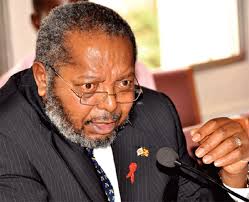Bank of Uganda (BoU), has maintained the Central Bank Rate (CBR) at 7 per cent in October 2020, this is according to a Monetary Policy Statement issued by Governor Bank of Uganda, Prof. Emmanuel Tumusiime Mutebile.
According to the statement, the high frequency indicators for economic activity in the quarter to September 2020, point to a mild recovery of economic activity with estimated growth of 2 percent from a sharp contraction of 6 percent in the quarter to June 2020.
“The simultaneous fiscal, monetary, and financial stimuli have been effective in avoiding the most negative economic consequences of the COVID-19 shock. The easing of the lockdown, the stability of the exchange rate, as well as a feeble improvement in both foreign and domestic demand are supporting economic growth recovery. However, economic growth is tepid, uneven, and still fragile and projected to contract in the range of 0.2 and 0.5 percent in 2020,” Mutebile said.
He said that barring a renewed worsening of the course of the COVID-19 pandemic, GDP growth momentum in 12 to 24 months ahead is likely to be modest against sluggish external demand, subdued consumer expenditure, the weak performance of the service sector, commercial banks’ cautious lending, and uncertain economic outlook.
The economic growth in Financial Year (FY) 2020/21 is projected at 2.0-3.0 percent and is expected to increase to 5.0-6.0 percent in FY 2021/22 and to 6- 7 percent in the outer years.
“The economic outlook is extremely uncertain, largely because of the unpredictable course of the virus and the wide range of shocks hitting the economy. The downside risks to the economic growth projection include the possibility of an increase in new infections and a longer period to get the virus under control,” he said.
“On the upside, economic growth could recover swiftly than currently projected if the threat from COVID-19 fades more quickly than currently envisaged and global economic growth strengthens. Such a scenario could lead to greater business and consumer confidence, which factors would likely lead to a stronger domestic economic growth,” he added.
The annual headline inflation eased to 4.5 percent in September 2020 from 4.6 percent in August 2020, annual core inflation edged up to 6.2 percent from 5.9 percent in same period. The overall risks to the inflation outlook appear to be on the upside in the near term (12 months ahead).
“The annual core inflation will remain above 5 percent target in the near term but is projected to gradually converge to 5 percent in 2022. While there are no demand side pressures evident, cost push pressures emanating from higher taxes on imported consumer and intermediate products and social distancing measures could cause inflation to edge up further in coming months.”
“In addition, price pressures could increase, due to the further easing of lockdown measures as households increase spending on items that they had been forced to defer, e.g. expenditure on school fees. These pressures could also increase due to higher production costs from persistent supply disruptions. Offsetting such forces are those that will weigh on demand. These include a persistent increase in consumers’ precautionary saving prompted by higher perceived risk of joblessness and COVID-19 infection, less transfers from abroad and restrained credit extension by banks. In addition, oil prices remain low and local food price inflation is expected to remain contained,” he said.
Despite a higher than target core inflation outcome since June 2020, the MPC notes that the slowing down of the economy and gradual recovery will bring back inflation to around target 12-24 months ahead.
Inflation is expected to be well contained over the medium-term, on the premise that both global and domestic risks do not materialize. Against this backdrop, the MPC decided to keep CBR rate unchanged at 7 percent and maintain liquidity support to supervised financial institutions.
The band on the CBR has also been maintained at +/-2 percentage points, while the margin on the rediscount rate and bank rate is unchanged at 3 and 4 percentage points on the CBR, respectively. Consequently, the rediscount rate and the bank rate have been maintained at 10 percent and 11 percent, respectively.







